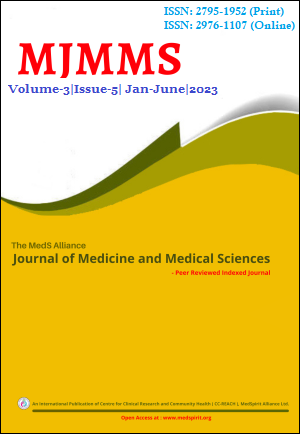Evaluation of Blood Group in Co-relation with the Dermatoglyphics Patterns among Medical Students: A Cross-Sectional Study
DOI:
https://doi.org/10.3126/mjmms.v3i5.59940Keywords:
ABO blood group, Anatomy, dermatoglyphics pattern, gender, forensic identityAbstract
INTRODUCTION: Dermatoglyphics is the scientific study of naturally occurring epidermal ridges and their configuration on the digits, palms, and soles apart from flexion crease and secondary folds. Fingerprint scans are now-a-days used in the biometric systems, validating electronic registration, cashless transactions, library access and forensic purposes. The aim of this study was to investigate the correlation between dermatoglyphics patterns and blood groups.
MATERIALS AND METHODS: This is a cross-sectional study designed to study the dermatoglyphics pattern in correlation with blood group among 200 medical students from November 2022 to April 2023. Data analysis was done using SPSS version 16 and Chi-Square test was used.
RESULTS: The major type of blood group among the participants was blood group O (38.5%) followed by blood group B (37%), blood group A (17.5%) and blood group AB (7%). Rh positive was the dominant Rh factor (95.5%) while Rh negative was 4.5% only. The general distribution of dermatoglyphics pattern showed that the dominant pattern of finger print was loop type (52%) in both the genders, followed by whorls pattern (36.5%) and arch pattern (11.5%). Based on Chi- Square test it was observed that the dominant type of finger print was whorls type in blood group O and B while, arch type of finger print was common in blood group B.
CONCLUSIONS: Finger prints of each individual is unique. Hence, it can be effectively used for corroborative identification of an individual in mass disasters as well as in other forensic and anatomical applications.
Downloads
Downloads
Published
How to Cite
Issue
Section
License

This work is licensed under a Creative Commons Attribution-NonCommercial 4.0 International License.




